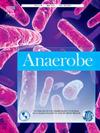High prevalence and clonality of Clostridioides difficile isolates from cryptic clades in household composters and small mammals
IF 2.6
3区 生物学
Q3 MICROBIOLOGY
引用次数: 0
Abstract
Objective
We aimed to investigate the prevalence, genotypic diversity, and clonality of Clostridioides difficile strains from household composters and faeces of small mammals captured nearby.
Methods
Compost piles from three locations were sampled, with three compost samples collected from each bin. Additionally, 5–6 small mammals were trapped around each compost pile. C. difficile was isolated from faecal and compost samples and characterized with PCR ribotyping, toxinotyping, and genome sequencing.
Results
C. difficile was detected in all nine compost samples, while only two (12.5 %) of 16 small mammal faecal samples tested positive. Ten PCR ribotypes (RTs) were identified, with only one, RT014/020, being toxigenic. The remaining nine RTs belonged to two cryptic clades, C-II and C-III. Some of the isolates from cryptic clades i.e. RT SLO 308 carried a divergent tcdA gene and yielded weakly positive results with C. diff Quik Chek Complete immunoassay. Clonal C. difficile isolates of RT SLO 308 were found at the same site in both a compost sample and a small mammal, suggesting potential transmission. Clonality was also observed among isolates from different compost samples within a single pile.
Conclusions
While our study could not establish the exact direction of C. difficile transmission between compost and mice, it highlights the role of small mammals within the One Health framework of C. difficile transmission pathways.
难辨梭状芽孢杆菌在家庭堆肥和小型哺乳动物中的高流行率和克隆性。
目的:调查家庭堆肥和附近捕获的小兽粪便中艰难梭菌的流行率、基因型多样性和克隆性。方法:对3个地点的堆肥堆进行取样,每箱取3个堆肥样。此外,在每个堆肥堆周围捕获了5-6只小型哺乳动物。从粪便和堆肥样本中分离出艰难梭菌,并通过PCR核糖分型、毒素分型和基因组测序对其进行了鉴定。结果:9份堆肥样品均检出艰难梭菌,16份小型哺乳动物粪便样品中仅有2份(12.5%)检出阳性。共鉴定出10个PCR核糖型(rt),其中只有1个(RT014/020)为产毒核糖型。其余9个RTs属于两个隐枝,C-II和C-III。部分隐匿分支(如RT SLO 308)的分离株携带不同的tcdA基因,其快速免疫检测结果呈弱阳性。在堆肥样品和小型哺乳动物中均发现难辨梭菌SLO 308克隆分离株,提示可能存在传播。从不同堆肥样品中分离的菌株在同一堆中也观察到克隆性。结论:虽然我们的研究不能确定艰难梭菌在堆肥和小鼠之间传播的确切方向,但它突出了小型哺乳动物在One Health框架下艰难梭菌传播途径的作用。
本文章由计算机程序翻译,如有差异,请以英文原文为准。
求助全文
约1分钟内获得全文
求助全文
来源期刊

Anaerobe
生物-微生物学
CiteScore
5.20
自引率
8.70%
发文量
137
审稿时长
76 days
期刊介绍:
Anaerobe is essential reading for those who wish to remain at the forefront of discoveries relating to life processes of strictly anaerobes. The journal is multi-disciplinary, and provides a unique forum for those investigating anaerobic organisms that cause infections in humans and animals, as well as anaerobes that play roles in microbiomes or environmental processes.
Anaerobe publishes reviews, mini reviews, original research articles, notes and case reports. Relevant topics fall into the broad categories of anaerobes in human and animal diseases, anaerobes in the microbiome, anaerobes in the environment, diagnosis of anaerobes in clinical microbiology laboratories, molecular biology, genetics, pathogenesis, toxins and antibiotic susceptibility of anaerobic bacteria.
 求助内容:
求助内容: 应助结果提醒方式:
应助结果提醒方式:


